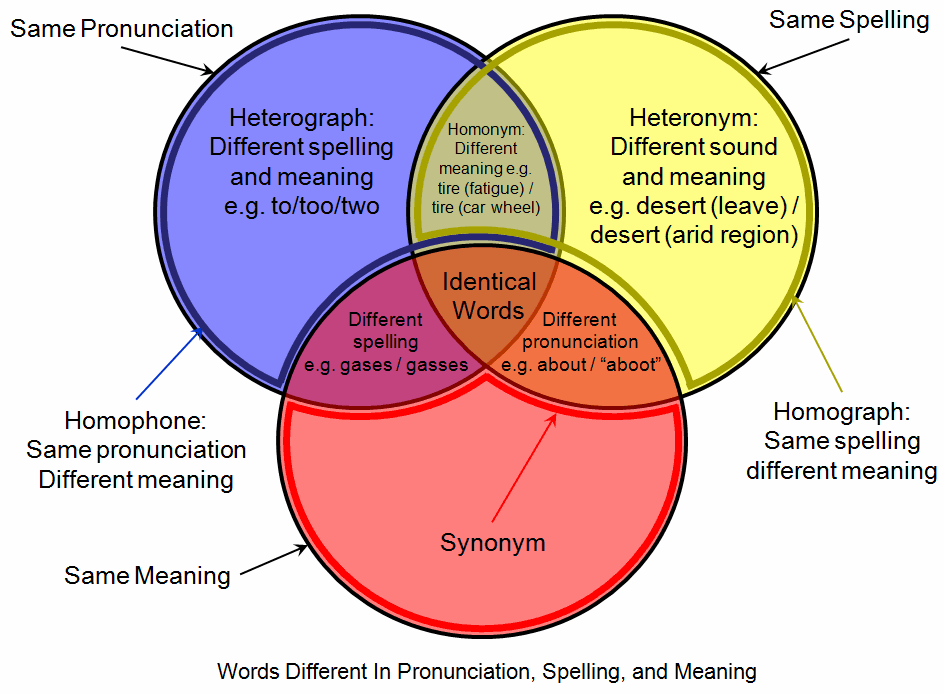|
Paronym
Paronyms are near-homophones ("soundalike"), near-homographs ("lookalike") and/or near-cognates ("meanalike") — words that are similar but not identical in pronunciation, spelling, and/or lexical meaning — which may cause confusion in their understanding (reception) and usage (production). Paronymy is the relationship between a pair of words or phrases which are similar or partially identical in spelling, pronunciation and/or meaning. In the discussion of semantic analysis, the term ''paronym'' can also be used in a narrower sense to refer to words that are derived from the same root, i.e. cognate words. Examples English Examples of English paronyms include: * '' accept'' and '' except'' * '' affect'' and ''effect'' * '' alternately'' and '' alternatively'' * ''altitude'' and ''attitude'' * '' artful'' and ''artistic'' * ''artist'' and ''artisan'' * ''authoritative'' and ''authoritarian'' * '' barely'' and ''barley'' * ''billion'' and ''bullion'' * ''breath'' and '' bre ... [...More Info...] [...Related Items...] OR: [Wikipedia] [Google] [Baidu] |
Homophone
A homophone () is a word that is pronounced the same as another word but differs in meaning or in spelling. The two words may be spelled the same, for example ''rose'' (flower) and ''rose'' (past tense of "rise"), or spelled differently, as in ''rain'', ''reign'', and ''rein''. The term ''homophone'' sometimes applies to units longer or shorter than words, for example a phrase, letter, or groups of letters which are pronounced the same as a counterpart. Any unit with this property is said to be ''homophonous'' (). Homophones that are spelled the same are both homographs and homonyms. For example, the word ''read'', in "He is well ''read''" and in "Yesterday, I ''read'' that book". Homophones that are spelled differently are also called heterographs, e.g. ''to'', ''too'', and ''two''. Wordplay and games Homophones are often used to create puns and to deceive the reader (as in crossword puzzles) or to suggest multiple meanings. The last usage is common in poetry and creat ... [...More Info...] [...Related Items...] OR: [Wikipedia] [Google] [Baidu] |
Artistic
Art is a diverse range of culture, cultural activity centered around works of art, ''works'' utilizing Creativity, creative or imagination, imaginative talents, which are expected to evoke a worthwhile experience, generally through an expression of emotional power, conceptual ideas, technical proficiency, or beauty. There is no generally agreed definition of what constitutes ''art'', and its interpretation has varied greatly throughout history and across cultures. In the Western world, Western tradition, the three classical branches of visual art are painting, sculpture, and architecture. Theatre, dance, and other performing arts, as well as literature, music, film and other media such as interactive media, are included in a broader definition of "the arts". Until the 17th century, ''art'' referred to any skill or mastery and was not differentiated from crafts or sciences. In modern usage after the 17th century, where aesthetic considerations are paramount, the fine arts are s ... [...More Info...] [...Related Items...] OR: [Wikipedia] [Google] [Baidu] |
Childish
*
{{Disambig ...
Childish describes something suitable for a child, or something (particularly behavior) that is immature. It may also refer to: * Billy Childish (born 1959), English artist, writer, and musician * Childish Gambino (born 1983), American actor, writer, comedian, director, and musician * Childish Major (born 1991), American rapper and record producer See also * Minor (law) In law, a minor is someone under a certain age, usually the age of majority, which demarcates an underage individual from legal adulthood. The age of majority depends upon Jurisdiction (area), jurisdiction and application, but it is commonly 18 ... [...More Info...] [...Related Items...] OR: [Wikipedia] [Google] [Baidu] |
Culpability
In criminal law, culpability, or being culpable, is a measure of the degree to which an agent, such as a person, can be held morally or legally responsible for action and inaction. It has been noted that the word ''culpability'' "ordinarily has normative force, for in nonlegal English, a person is culpable only if he is justly to blame for his conduct". The guilt principle requires that in order to convict a person it is necessary to ascertain his voluntary or reckless behaviour, Strict Liability being prohibited. Etymology Culpability descends from the Latin concept of fault ('' culpa''), which is also the origin of the phrase, '' mea culpa''. Concept The concept of culpability is intimately tied up with notions of agency, freedom, and free will. All are commonly held to be necessary, but not sufficient, conditions for culpability. In law From a legal perspective, culpability describes the degree of one's ''blameworthiness'' in the commission of a crime or offense. ... [...More Info...] [...Related Items...] OR: [Wikipedia] [Google] [Baidu] |
Breadth
Length is a measure of distance. In the International System of Quantities, length is a quantity with dimension distance. In most systems of measurement a base unit for length is chosen, from which all other units are derived. In the International System of Units (SI) system, the base unit for length is the metre. Length is commonly understood to mean the most extended dimension of a fixed object. However, this is not always the case and may depend on the position the object is in. Various terms for the length of a fixed object are used, and these include height, which is vertical length or vertical extent, width, breadth, and depth. ''Height'' is used when there is a base from which vertical measurements can be taken. ''Width'' and ''breadth'' usually refer to a shorter dimension than ''length''. ''Depth'' is used for the measure of a third dimension. Length is the measure of one spatial dimension, whereas area is a measure of two dimensions (length squared) and volume i ... [...More Info...] [...Related Items...] OR: [Wikipedia] [Google] [Baidu] |
Breath
Breathing (spiration or ventilation) is the neuroscience of rhythm, rhythmical process of moving air into (inhalation) and out of (exhalation) the lungs to facilitate gas exchange with the Milieu intérieur, internal environment, mostly to flush out carbon dioxide and bring in oxygen. All Aerobic respiration, aerobic creatures need oxygen for cellular respiration, which extracts energy from the reaction of oxygen with molecules derived from food and produces carbon dioxide as a Waste, waste product. Breathing, or external respiration, brings Atmosphere of Earth, air into the lungs where gas exchange takes place in the Pulmonary alveolus, alveoli through diffusion. The body's circulatory system transports these gases to and from the cells, where cellular Respiration (physiology), respiration takes place. The breathing of all vertebrates with lungs consists of repetitive cycles of inhalation and exhalation through a highly branched system of tubes or Respiratory tract, airways w ... [...More Info...] [...Related Items...] OR: [Wikipedia] [Google] [Baidu] |
Bullion
Bullion is non-ferrous metal that has been refined to a high standard of elemental purity. The term is ordinarily applied to bulk metal used in the production of coins and especially to precious metals such as gold and silver. It comes from the Anglo-Norman term for a melting-house where metal was refined, and earlier from French , "boiling". Although precious metal bullion is no longer used to make coins for general circulation, it continues to be held as an investment with a reputation for stability in periods of economic uncertainty. To assess the purity of gold bullion, the centuries-old technique of fire assay is still employed, together with modern spectroscopic instrumentation, to accurately determine its quality. As investment The specifications of bullion are often regulated by market bodies or legislation. In the European Union, the minimum purity for gold to be referred to as "bullion", which is treated as investment gold with regard to taxation, is 99.5% for ... [...More Info...] [...Related Items...] OR: [Wikipedia] [Google] [Baidu] |
Billion
Billion is a word for a large number, and it has two distinct definitions: * 1,000,000,000, i.e. one thousand million, or (ten to the ninth power), as defined on the short scale. This is now the most common sense of the word in all varieties of English; it has long been established in American English and has since become common in Britain and other English-speaking countries as well. * 1,000,000,000,000, i.e. one million million, or (ten to the twelfth power), as defined on the long scale. This number is the historical sense of the word and remains the established sense of the word in other European languages. Though displaced by the short scale definition relatively early in US English, it remained the most common sense of the word in Britain until the 1950s and still remains in occasional use there. American English adopted the short scale definition from the French (it enjoyed usage in France at the time, alongside the long-scale definition). The United Kingdom used the lo ... [...More Info...] [...Related Items...] OR: [Wikipedia] [Google] [Baidu] |
Barley
Barley (), a member of the grass family, is a major cereal grain grown in temperate climates globally. It was one of the first cultivated grains; it was domesticated in the Fertile Crescent around 9000 BC, giving it nonshattering spikelets and making it much easier to harvest. Its use then spread throughout Eurasia by 2000 BC. Barley prefers relatively low temperatures and well-drained soil to grow. It is relatively tolerant of drought and soil salinity, but is less winter-hardy than wheat or rye. In 2023, barley was fourth among grains in quantity produced, 146 million tonnes, behind maize, rice, and wheat. Globally, 70% of barley production is used as animal feed, while 30% is used as a source of fermentable material for beer, or further distilled into whisky, and as a component of various foods. It is used in soups and stews and in barley bread of various cultures. Barley grains are commonly made into malt using a traditional and ancient method of preparatio ... [...More Info...] [...Related Items...] OR: [Wikipedia] [Google] [Baidu] |
Barely
Bareilly () is a city in Bareilly district in the Indian state of Uttar Pradesh. It is among the largest metropolises in Western Uttar Pradesh and is the centre of the Bareilly division as well as the historical region of Rohilkhand. The city lies in the Indo-Gangetic Plains, about northwest of the state capital, Lucknow, and east of the national capital, New Delhi. With a population of 903,668 in 2011, it is the List of cities in Uttar Pradesh by population, eighth most populous city in the state, list of North Indian cities by population, 17th in northern India and List of most populous cities in India, 54th in India. It is located on the bank of Ramganga River and is the site of the Ramganga Barrage built for canal irrigation. The earliest settlement in what is now Bareilly was established in 1537 by a local chieftain Jagat Singh Katehriya who named it 'Bans-Bareli' after his two sons Bansaldev and Bareldev. The town came under the rule of the Mughal Empire, Mughals in 15 ... [...More Info...] [...Related Items...] OR: [Wikipedia] [Google] [Baidu] |
Authoritarian
Authoritarianism is a political system characterized by the rejection of political plurality, the use of strong central power to preserve the political ''status quo'', and reductions in democracy, separation of powers, civil liberties, and the rule of law. Authoritarian regimes may be either autocratic or oligarchic and may be based upon the rule of a party or the military. States that have a blurred boundary between democracy and authoritarianism have sometimes been characterized as "hybrid democracies", " hybrid regimes" or "competitive authoritarian" states. The political scientist Juan Linz, in an influential 1964 work, ''An Authoritarian Regime: Spain'', defined authoritarianism as possessing four qualities: # Limited political pluralism, which is achieved with constraints on the legislature, political parties and interest groups. # Political legitimacy based on appeals to emotion and identification of the regime as a necessary evil to combat "easily recognizable ... [...More Info...] [...Related Items...] OR: [Wikipedia] [Google] [Baidu] |







